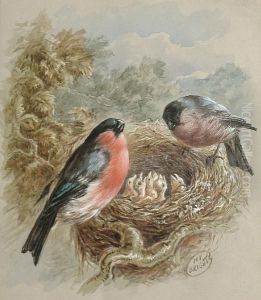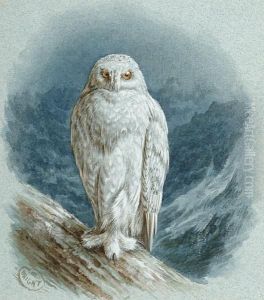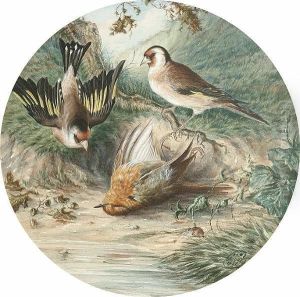Henry Barnabus Bright Paintings
Henry Barnabus Bright, born in 1810 in Saxmundham, Suffolk, England, was a notable British landscape painter associated with the Norwich School of painters, which was a regional group that emerged in the early 19th century. Although not as widely recognized as some of his contemporaries, Bright contributed to the British landscape tradition with his focus on naturalistic scenery and rural landscapes.
Bright exhibited a talent for art at a young age and was encouraged to pursue his interest. He studied under Alfred Stannard, a member of the Norwich School, which profoundly influenced his development as an artist. The Norwich School was the first provincial art movement in Britain, and its members were inspired by the beauty of the local countryside as well as by the work of Dutch landscape painters from the 17th century.
Throughout his career, Bright developed a distinctive style characterized by detailed and luminous depictions of the English countryside. He had a particular affinity for capturing the effects of light and atmosphere, often portraying the changing conditions of weather and seasons. His works typically feature pastoral scenes, riverscapes, and woodland views, which he rendered with a delicate palette and attention to the subtleties of natural light.
Bright's paintings were exhibited at various institutions, including the British Institution and the Royal Academy. Despite his association with the Norwich School, he spent much of his working life in Ipswich and maintained a studio there. Bright's work received modest recognition during his lifetime, and he was regarded as a skilled practitioner of landscape art.
After his death in 1873, Bright's paintings continued to be appreciated by art collectors and the public, although he did not achieve the lasting fame of some of his Norwich School contemporaries, such as John Crome and John Sell Cotman. Today, Bright's paintings can be found in several art collections and museums in the United Kingdom, and he is remembered for his contribution to the British landscape painting tradition.


